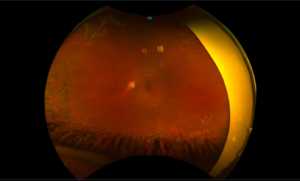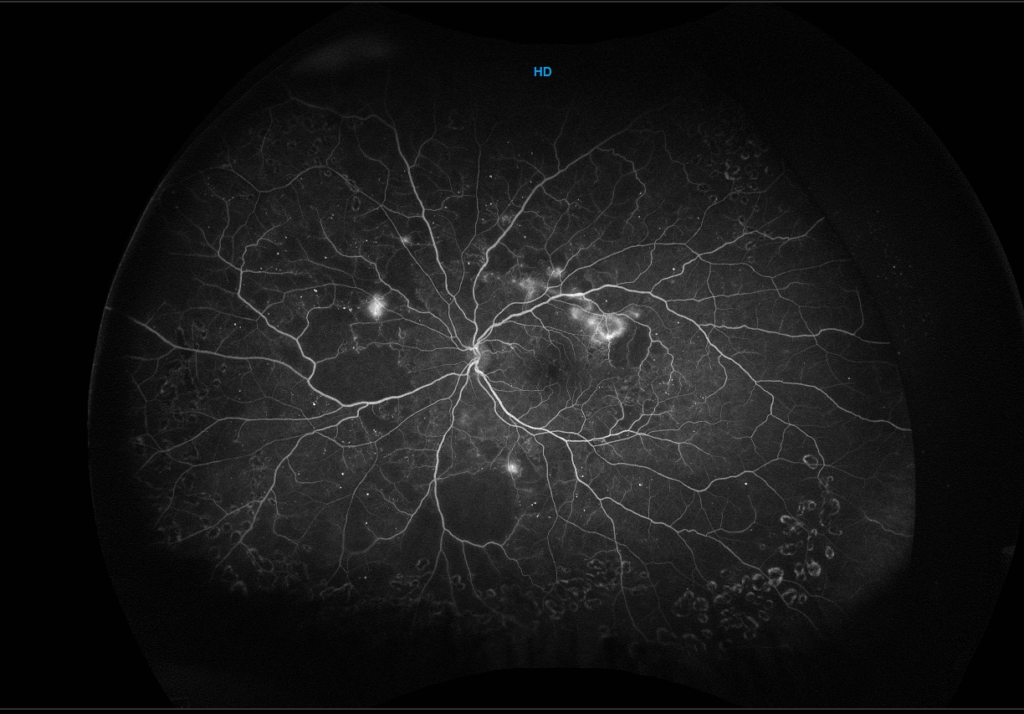What is Fluorescein Angiography?
Fluorescein Angiography (FA) is a medical procedure in which Fluorescein dye is injected into a patient’s bloodstream through the hand/arm to highlight the blood flow of the retina. While a fundus photography captures a snapshot of the retina at one moment in time, Fluorescein Angiography provides the ophthalmologist with a series of pictures taken over a period of time. Pictures will be subsequently taken as the dye passes through the vessels in the eye. This becomes extremely helpful in diagnosing vascular disorders such as diabetic retinopathy and macular degeneration as well as determining if there is proper blood flow (perfusion) within the retina or if there are areas of inflammation within the vasculature that are causing leakages. If so, it can reveal the specific location of damaged blood vessels and any corresponding fluid leakage in the retina. This information, which otherwise is not obvious during ocular or fundus examination, can then aid the physician to determine the exact diagnosis and treatment plan as well as the frequency of treatments needed to control the disease.
How does it work?
The FA testing will take approximately 5-10 minutes and will be conducted by our trained and experienced FA technician. Before taking an FA image, patients will have their eyes dilated. This helps ensure that the view to the retina is optimal for best evaluation. During the test, patients will be sitting comfortably in front of the machine with their chin rested on the chin-rest. Once the pictures are taken, they will be uploaded to the patient’s chart where the doctor can review them with patients in the private exam room. It is highly recommended for patients to drink 2-3 cups of water before the procedure while avoiding any coffee, tea, or caffeinated beverages. Patients should continue to take any medications before or after this test as usual. Patients should expect to have colored urine for up to 24 hours after this test. Although uncommon, it is normal to experience slight nausea last seconds during the procedure. In some instances, the dye can leak out of fragile veins and may result in slight burning and yellow staining. Severe allergic reactions to the dye are extremely rare, although slight itchiness or hives can occur occasionally, which is managed with antihistamines.
review them with patients in the private exam room. It is highly recommended for patients to drink 2-3 cups of water before the procedure while avoiding any coffee, tea, or caffeinated beverages. Patients should continue to take any medications before or after this test as usual. Patients should expect to have colored urine for up to 24 hours after this test. Although uncommon, it is normal to experience slight nausea last seconds during the procedure. In some instances, the dye can leak out of fragile veins and may result in slight burning and yellow staining. Severe allergic reactions to the dye are extremely rare, although slight itchiness or hives can occur occasionally, which is managed with antihistamines.

